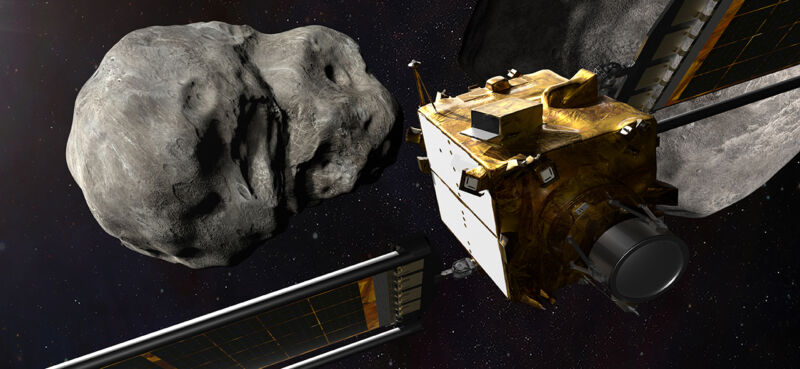
Next Monday, NASA will broadcast its first attempt to alter an asteroid’s orbit, an ability that will be essential if we detect an asteroid that threatens to collide with Earth. The planetary defense effort is centered on a craft called DART, for Double Asteroid Redirection Test, which will target a small asteroid called Dimorphos orbiting the larger 65803 Didymos, forming a binary system. If all goes according to plan, DART will target a head-on collision that slows Dimorphos and changes its orbit around Didymos. NASA has repeatedly stressed that there is no way for an asteroid or any other material released in the collision to pose a threat to Earth.
Ars will be at the mission control center at the Johns Hopkins Applied Physics Laboratory (APL) for the planned collision, which will also be broadcast live on NASA’s YouTube channels. While we’ll know right away if the collision happened as planned, it could take several months to know for sure that Dimorphos’ orbit has been modified successfully.
To prepare you for Monday’s festivities, we’ve put together a background on the DART mission and its planned follow-up observations.
DART and its final approach
The DART spacecraft itself weighs just over 600 kg and is particularly notable for its lack of instruments. The solar panels contain an experimental concentrating solar cell that takes up less space to generate the same amount of power as existing space-based hardware, and the main transmitter is testing a new antenna configuration. The ion engine is also a next-generation evolution of previous NASA hardware.
But all the action is handled by a single camera, the Didymos Reconnaissance and Asteroid Camera for Optical navigation, or DRACO, a single-color camera measuring 2,560×2,160 pixels. DRACO and the transmission hardware are capable of sending an image back to Earth every second. During the final approach to Didymos, DART will be far enough that return transmissions take more than a minute. As such, the final approach and targeting of the asteroid will be handled by an onboard navigation system called SMART Nav (Small-body Maneuvering Autonomous Real Time Navigation).
At this point, Dimorphos is so small that DRACO can’t solve it, and will remain so until about an hour and a half before the impact. As described by Evan Smith, DART’s deputy mission system engineer, the system will switch to onboard navigation approximately four hours before impact, and the SMART Nav will follow the larger Didymos and use it for navigation until approximately 50 minutes before the collision. collision, or about half an hour after it can be resolved. 2.5 minutes before impact, the ion engine will shut down and DART will collide at approximately 6 kilometers per second.
Although Dimorphos is only about 120 meters wide, it will completely fill the view from DRACO from about two minutes before impact. “We don’t know what Dimorphos looks like,” said Nancy Chabot, a planetary scientist with the APL. “This will be the first time we see what this asteroid looks like.” The final image, sent a second before the impact, resolves features that are only tens of centimeters wide, according to Chabot.
And then, if all goes well, the broadcasts stop.

